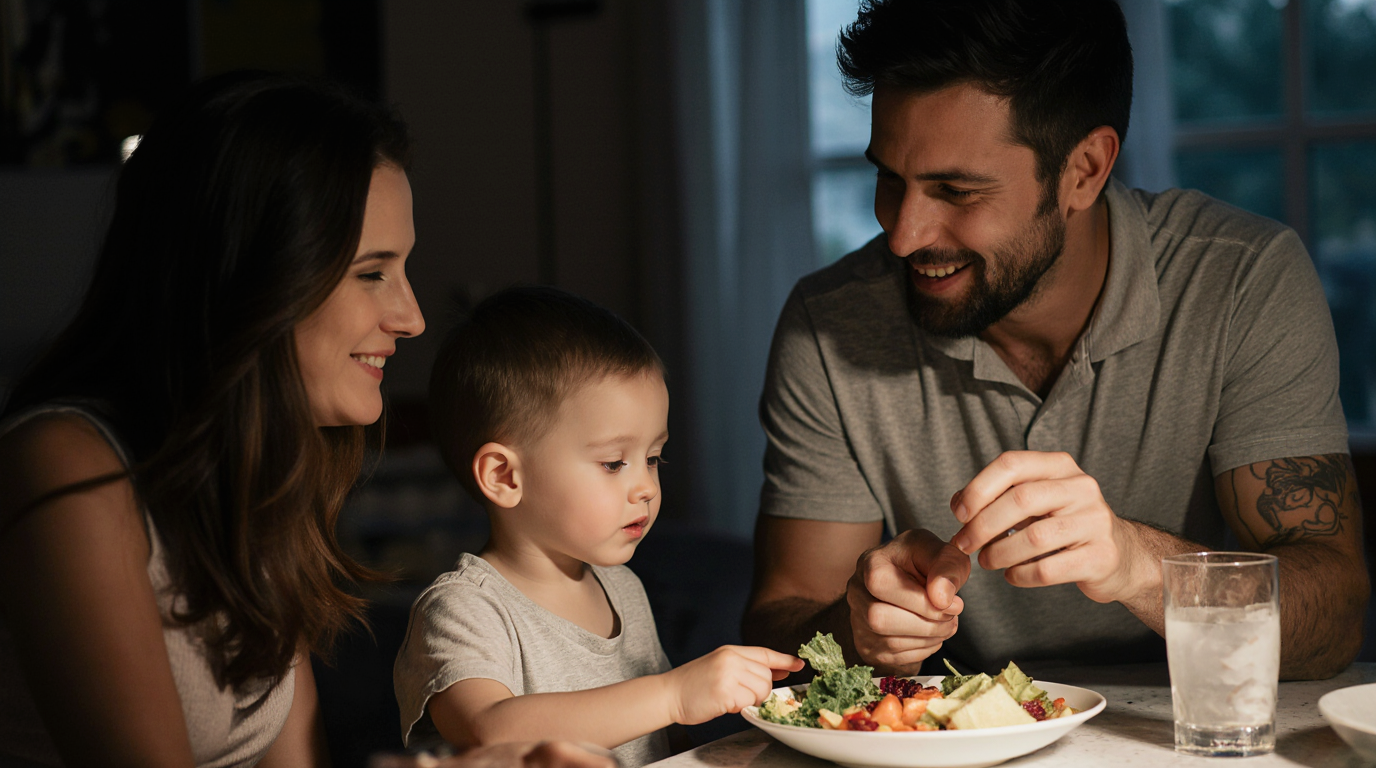How to Talk to Kids About Body Positivity & Healthy Habits (Without Triggering Insecurities)
Table of Contents
How to Talk to Kids About Body Positivity & Healthy Habits (Without Triggering Insecurities)
Between social media filters, diet culture, and playground comments, today’s kids face unprecedented pressure about their bodies—40% of 9-year-olds have already dieted (NEDA). But with the right approach, you can foster body confidence and balanced health without obsession.
This guide offers age-by-age scripts, science-backed strategies, and common mistakes to avoid—helping kids develop a joyful relationship with food and movement, not fear or shame.
1. Why Traditional Approaches Backfire
“Calling food ‘good’ or ‘bad’ teaches kids to moralize eating—not listen to their bodies.” — Dr. Yami Cazorla-Lancaster
Problematic Phrases vs. Empowering Alternatives
| Avoid Saying | Try Instead | Why It Works |
|---|---|---|
| “You’re getting chubby.” | “Our bodies change as we grow—that’s normal!” | Normalizes development |
| “No seconds—you’ll get fat.” | “Is your tummy still hungry or just your eyes?” | Teaches mindful eating |
| “She’s pretty for a big girl.” | “All bodies are good bodies.” | Rejects size hierarchy |
Shocking Stat: Kids who diet are 3x more likely to develop eating disorders (AAP).
2. Age-by-Age Conversations
Ages 3-5: Foundations
- Focus: Body functionality (“Our legs help us run!”)
- Script: “Bodies come in different shapes—like trees! All are strong.”
Ages 6-9: Media Literacy
- Focus: Spotting Photoshop (“See how her waist looks pinched? That’s edited.”)
- Activity: Circle “fake” parts in magazine ads with markers
Ages 10-13: Puberty Prep
- Focus: Normalizing changes (“Some gain weight before growth spurts—that’s fuel!”)
- Script: “Weight lifting ≠ bulky. Muscles help your bones!”
Teens: Critical Thinking
- Focus: Algorithm awareness (“Social media shows unrealistic ‘perfect’ bodies for profit.”)
- Activity: Follow body-positive influencers together (@mikzazon)
3. 5 Pillars of Body-Positive Health
1. Food Neutrality
- No: “Junk food” labels
- Yes: “Some foods fuel us longer, some taste yummy—both are okay!”
2. Joyful Movement
- Not: “Burning off dessert”
- Instead: “Let’s dance because it’s fun!”
3. Body Appreciation
- Compliment: “Your arms are so strong for climbing!” vs. “You look skinny!”
4. Media Filters
- Ask: “Do those abs look real? What’s cut out of this photo?”
5. Self-Talk Modeling
- Never: “I’m so fat in this.”
- Always: “I’m grateful my legs carry me.”
4. Handling Tough Questions
“Am I fat?”
- “Bodies change as we grow. What matters is how you feel, not a number.”
“Why is she so skinny?”
- “Bodies come in all sizes naturally. We never know someone’s health story.”
“I hate my thighs.”
- “Your thighs help you run/play/hug. What do you love that they let you do?”
5. Red Flags of Poor Body Image
🚩 Sudden food rules (no carbs after 5 PM)
🚩 Over-exercising (punishment vs. fun)
🚩 Body-checking (frequent mirror critiques)
When to Seek Help:
- Registered Dietitian (RD) for food fears
- Therapist specializing in body image
Conclusion
Body positivity isn’t about ignoring health—it’s about separating worth from weight. By focusing on function over form and joy over judgment, you’ll raise kids who:
✔ Eat intuitively
✔ Move playfully
✔ Respect body diversity
Key Takeaways:
✔ Never comment on others’ bodies (even compliments can backfire)
✔ Cook together to build food curiosity
✔ Praise effort/kindness over appearance
✔ Your example matters most—kids mirror your self-talk
FAQ
Q: How do I discuss obesity risks without shame?
A: Focus on habits, not size: “Eating veggies helps our hearts work best!”
Q: My teen wants to diet—what now?
A: Explore why: “What do you hope will change?” Offer balanced meals vs. restriction.
Q: Should I ban junk food?
A: Restriction increases cravings. Keep some at home to prevent bingeing elsewhere.
Q: What if family fat-shames my child?
A: Script: “We don’t comment on bodies—let’s talk about her art/sports/grades!”







